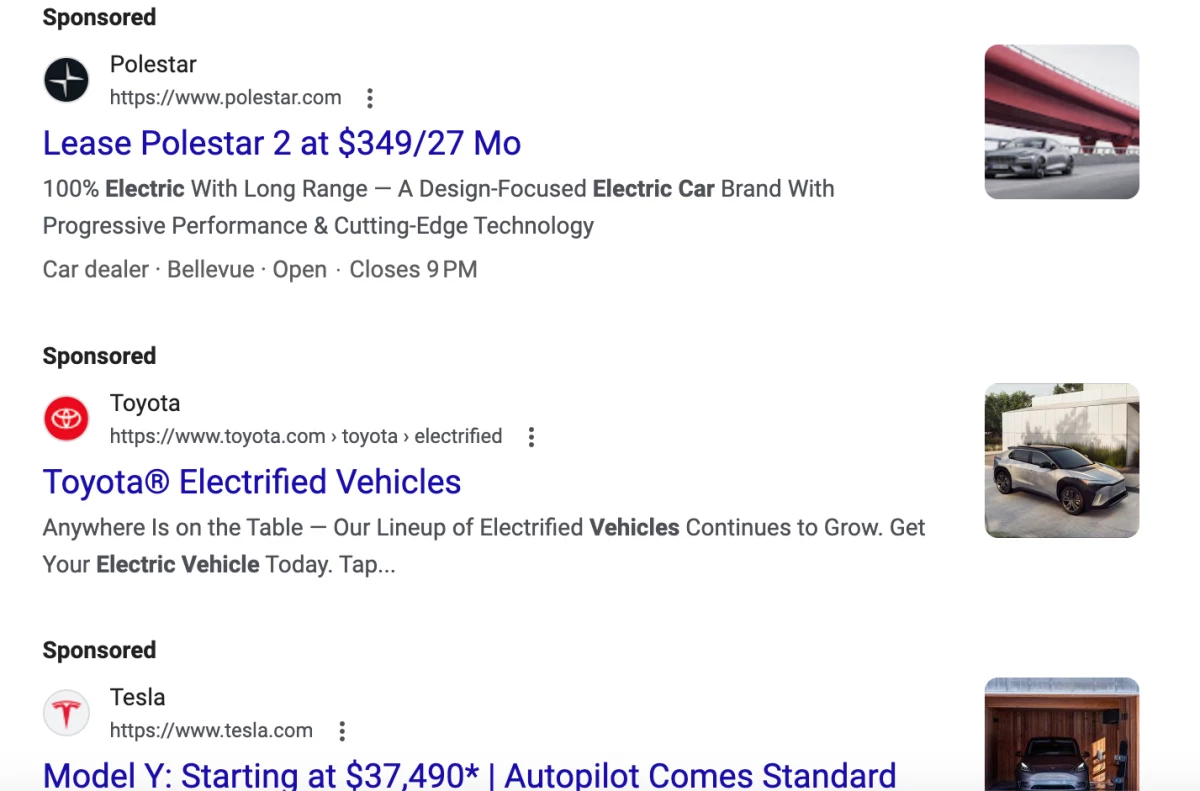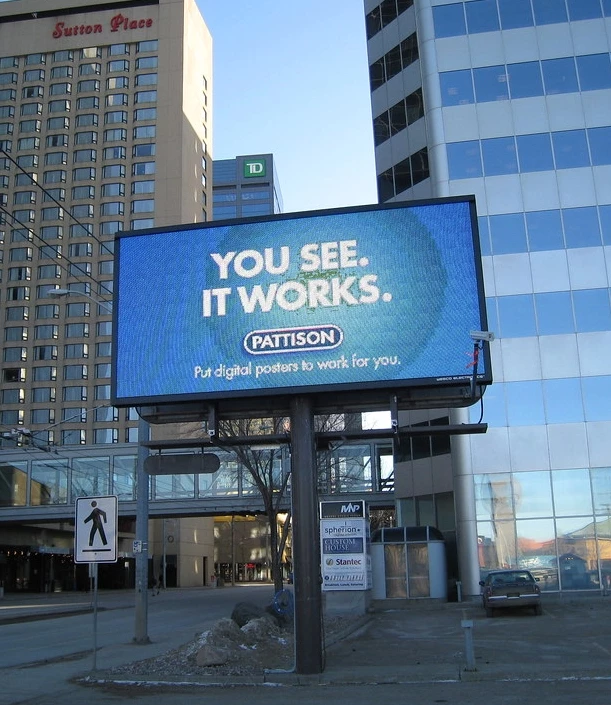“It’s not what you sell that matters as much as how you sell it.” – Brian Halligan Co-Founder of Hubspot
What Exactly is Digital Advertising?
Digital advertising uses the Internet and other digital channels to promote products, services, and brands. Also called online advertising, it first launched in the mid-90s with an AT&T banner ad on the HotWired website.
Now, it encompasses many tactics, including search engine marketing, social media advertising, display advertising, mobile advertising, and more. Businesses can reach their potential customers cost-effectively and measurably with digital advertising, making it an essential part of a marketing program for businesses of all sizes.
Types of Digital Advertising
The forms of digital ads are as varied as the channels available. Search engine ads include listings, display, and video, while website ad placement includes display, video, and native and sponsored content. Streaming media advertising can be purchased through OTT/CTV (Connected TV) and ad-supported channels. Video ads may be placed out-stream, on sites or other display locations, or instream before, during, or after video content on channels like YouTube.
Don’t forget the newish world of digital out-of-home. Static image billboards, bus shelter signs, and urban posters have become digitized and can be purchased programmatically.


How is Digital Advertising Purchased?
There are several ways to buy digital advertising. An internal media manager can manually set up paid search campaigns on Google or Bing or paid social on Meta, TikTok, and other social channels. Campaigns can be directly built and managed on those platforms, or you can have a media buying partner manage that for you.
Digital ads can also be purchased directly from a publisher to run on their website in display, video, native, or sponsored form. For inventory marketplaces, buyers can apply programmatic buying practices, which use technology to find audiences and manage digital ads across the web, mobile, apps, video, and live TV inventory.
5 Benefits of Digital Advertising
The right type of advertising depends on your audience, goals, and budget. Here are a few benefits of digital advertising in your omnichannel marketing strategy.
1. Audience First—Digital advertising makes it easier to reach a segmented audience. Whether through third-party cookies, your first-party data, look-alike lists, Ad IDs, or working with DSP and SSP platforms, it is much easier to target a specific audience through digital channels. That beats the ‘Spray and Pray’ approach to advertising.
2. Full-funnel—Most advertisers and their agencies agree that a full-funnel approach to marketing is a more effective path to reaching goals. Some traditional advertising options restrict campaign efforts to brand awareness with limited attribution opportunities. With digital, you can create ads for each level of the funnel or customer’s journey and utilize various digital channels to reach your customers at the right time and place, whether at the awareness stage, consideration, or conversion.
3. Flexibility and Testing to Optimize – Access to real-time data allows for managing campaigns in a more agile setting where creative, messaging, budgets, or targets can be modified on the fly. Buyers regularly monitor advertising results and can immediately make updates to improve performance. When media buyers can see which ad version is ‘winning’ in real-time, they can set up additional tests to provide clients with broad performance results that will inform future campaigns.
4. Performance Tracking – Reported results are more accurately available with closer attribution than advertising options that don’t allow for real-time monitoring and that reach a pre-determined audience with limited tracking tools.
5. Advertising Cost—In many instances, digital advertising is accessible to more brands due to the availability of lower-priced options. For $5.00 CPMs, you may reach a large audience with a programmatic display campaign or a $4.00 CPC and 7% conversion with a Google search ad.

Digital Advertising Challenges
With all the benefits of digital advertising, there are also downsides. Businesses should focus on brand safety. Be aware of ad fraud, which comes in many forms. Bots, pixel stuffing, click flooding, and MFA sites, which are low-quality content sites with a high number of ads using quick impression turnover and visited mainly by paid traffic, are just a few of the issues that make up ad fraud. Ad blockers have become more popular with internet users as well. These tools manage what you see when browsing by hiding or removing advertising.
Reports share that 37% of users have set up ad blockers, with people aged 24 – 35 in the highest category. Ad or banner blindness has also become an issue with digital advertising. Ad blindness occurs when internet users don’t see or ignore advertising due to excessive ads and information overload.
Other challenges are the lack of transparency in ad management, which is a reason to ensure you work with a trusted media partner, the costs of digital advertising going up in some areas due to increased demand, and, of course, we all have limited attention spans these days. The average human attention span is just over 8 seconds. This is a long time if you’re bull riding, but not so much if you want a prospect to see and engage with your online ad.
For all these reasons, it’s recommended that you have an experienced media buyer in-house or hire a trusted, professional, and collaborative media buying partner who is an expert in their field.
Measuring Digital Ads
The metrics you use to measure your digital campaigns may depend on your campaign goals. Be sure to outline your specific goals before setting up campaigns and decide which KPIs to prioritize. Below are a few metrics you may want to focus on for your digital advertising.
- CPC (Cost per click) – Cost paid for each ad click.
- CPM (Cost per impression) – Cost per thousand impressions (views).
- CTR (Click-through rate) – The number of clicks an ad receives divided by the number of times an ad is shown, reported in percentages.
- Engagement Rate – Total number of engagements divided by total number of impressions.
- ROAS (Return on ad spend) – Gross revenue from an ad campaign divided by total ad spend. Reported in a ratio ex: 5:1.
- VCR (Video completion rate) - This metric is the number of viewers who watched the entire video ad divided by the number of impressions.
- Conversion Rate
- Foot traffic measurement
Our planning team recently provided updated benchmarks for various digital advertising metrics. (Subject to change.)
- Programmatic Display - CTR ~ 0.11%
- Programmatic CTV - View Completion Rate (VCR) ~ 98%
- Programmatic Audio - VCR ~ 96%
- Google Search CTR ~ 6.11%, CPC ~ $4.22, Conversion ~ 7.04%
- Meta - CTR ~ 1.36%
- Tik Tok - CTR ~ 5.38%
Data shows that 44% of consumers have purchased after seeing an ad online; so digital advertising is likely a good option for your ad plans. You need to know who your audience is, set your goals and budget, and ensure your media buyer is setting up and managing your campaigns to meet or exceed your performance metrics. With a clearer understanding of digital advertising, you are ready to include this valuable resource in your advertising program.
If you have questions about digital advertising or media buying and planning in general, let’s connect.
Additional Sources:
https://www.semrush.com/blog/what-is-digital-advertising
https://advertising.amazon.com/library/guides/what-is-digital-advertising
https://www.wordstream.com/blog/ws/2023/02/24/digital-advertising
Main Image Source: pexels-jose-francisco-fernandez-saura-802024




